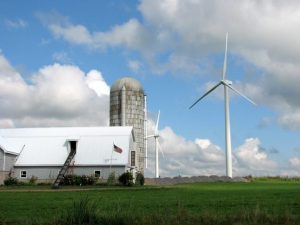By Hillary Aidun

On Wednesday, December 2, the Sabin Center filed comments with New York’s Office of Renewable Energy Siting (ORES) to support scaling up renewable energy capacity throughout the state. ORES was created pursuant to the Accelerated Renewable Energy Growth and Community Benefit Act, which was enacted in April to streamline the process for siting renewable energy facilities in New York. ORES proposed regulations in September to implement the new law, and is accepting public comments on the proposal.
The Sabin Center filed comments on behalf of grassroots organizations and individuals who want to welcome wind or solar energy facilities into their communities, including Win With Wind and Friends of Flint Mine Solar. Several signatories are clients of the Renewable Energy Legal Defense Initiative, a joint effort by the Sabin Center and the law firm of Arnold & Porter to provide pro bono legal counsel to local residents who support renewable energy projects that are facing opposition.
The Climate Leadership and Community Protection Act (CLCPA) provides that a minimum of 70% of statewide electric generation must be supplied by renewable energy by 2030, and that 100% be derived from zero-emission sources by 2040. The CLCPA also requires the development of at least 6,000 megawatts of solar energy by 2025 and 9,000 megawatts of offshore wind electricity generation by 2035. Meeting the CLCPA mandates depends on the rapid and large-scale deployment of renewable energy capacity across the state. Many farmers and other landowners wish to participate in that effort, both because they are concerned about the effects of climate change, and because leasing or selling land to a renewable energy developer can bring in much-needed income when making a sustainable living through agriculture alone has become untenable.
Unfortunately, zoning restrictions can be a barrier to renewable energy development, even where proposed facilities enjoy widespread local support. The Accelerated Renewable Energy Growth and Community Benefit Act recognizes and seeks to address this problem by allowing ORES to waive local restrictions that are unreasonably burdensome in light of the CLCPA targets and the environmental benefits of a proposed renewable energy facility. The Sabin Center’s comments urge ORES to give effect to this provision, and to ensure that the final regulations will promote, rather than hamstring, the safe and sensible siting of wind and solar energy facilities in New York State.
Read the comment letter here.

